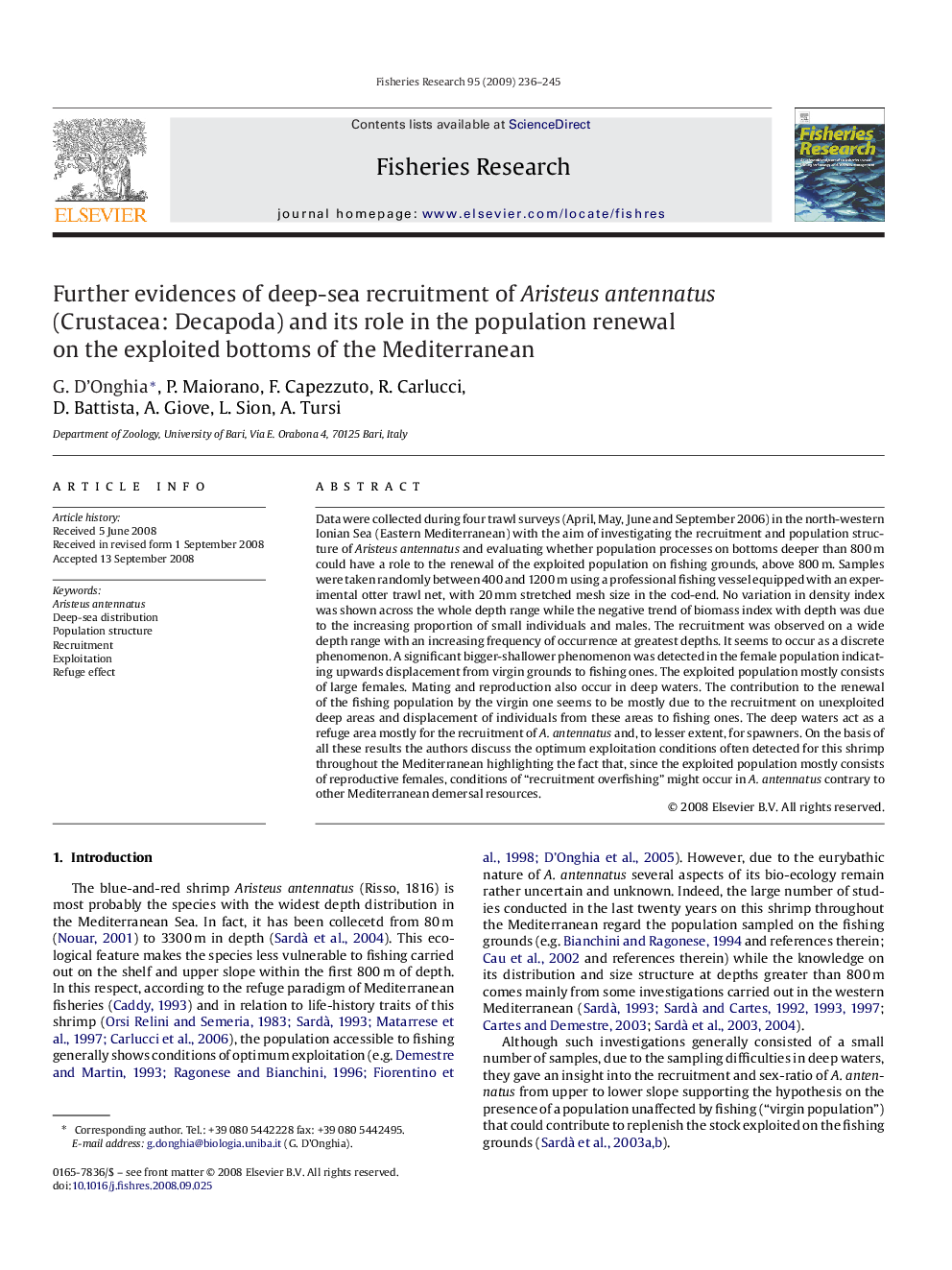| کد مقاله | کد نشریه | سال انتشار | مقاله انگلیسی | نسخه تمام متن |
|---|---|---|---|---|
| 4544158 | 1626857 | 2009 | 10 صفحه PDF | دانلود رایگان |

Data were collected during four trawl surveys (April, May, June and September 2006) in the north-western Ionian Sea (Eastern Mediterranean) with the aim of investigating the recruitment and population structure of Aristeus antennatus and evaluating whether population processes on bottoms deeper than 800 m could have a role to the renewal of the exploited population on fishing grounds, above 800 m. Samples were taken randomly between 400 and 1200 m using a professional fishing vessel equipped with an experimental otter trawl net, with 20 mm stretched mesh size in the cod-end. No variation in density index was shown across the whole depth range while the negative trend of biomass index with depth was due to the increasing proportion of small individuals and males. The recruitment was observed on a wide depth range with an increasing frequency of occurrence at greatest depths. It seems to occur as a discrete phenomenon. A significant bigger-shallower phenomenon was detected in the female population indicating upwards displacement from virgin grounds to fishing ones. The exploited population mostly consists of large females. Mating and reproduction also occur in deep waters. The contribution to the renewal of the fishing population by the virgin one seems to be mostly due to the recruitment on unexploited deep areas and displacement of individuals from these areas to fishing ones. The deep waters act as a refuge area mostly for the recruitment of A. antennatus and, to lesser extent, for spawners. On the basis of all these results the authors discuss the optimum exploitation conditions often detected for this shrimp throughout the Mediterranean highlighting the fact that, since the exploited population mostly consists of reproductive females, conditions of “recruitment overfishing” might occur in A. antennatus contrary to other Mediterranean demersal resources.
Journal: Fisheries Research - Volume 95, Issues 2–3, 14 January 2009, Pages 236–245